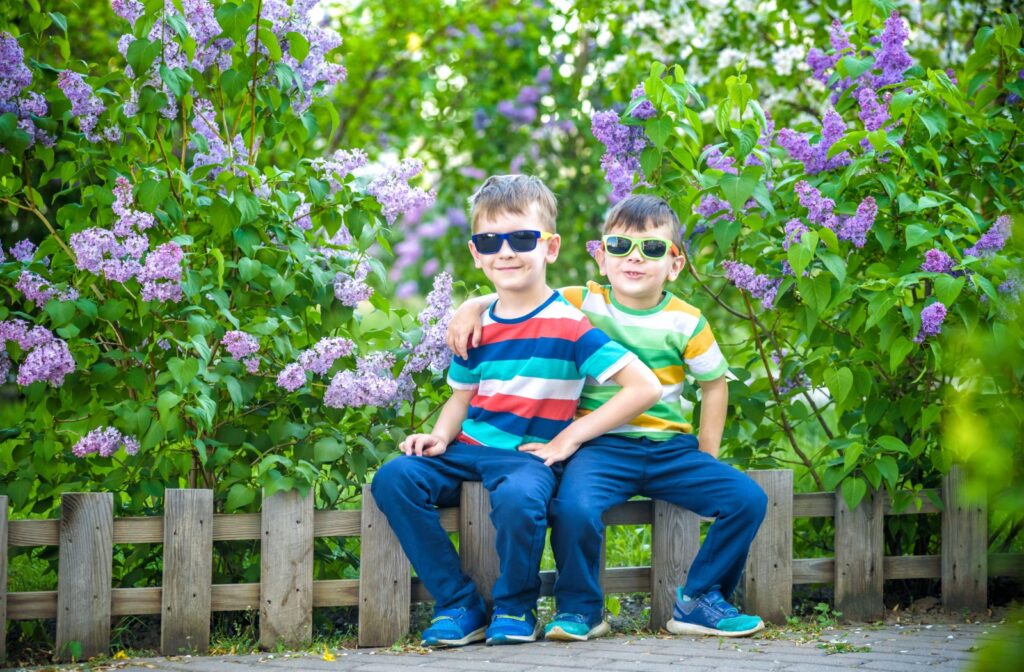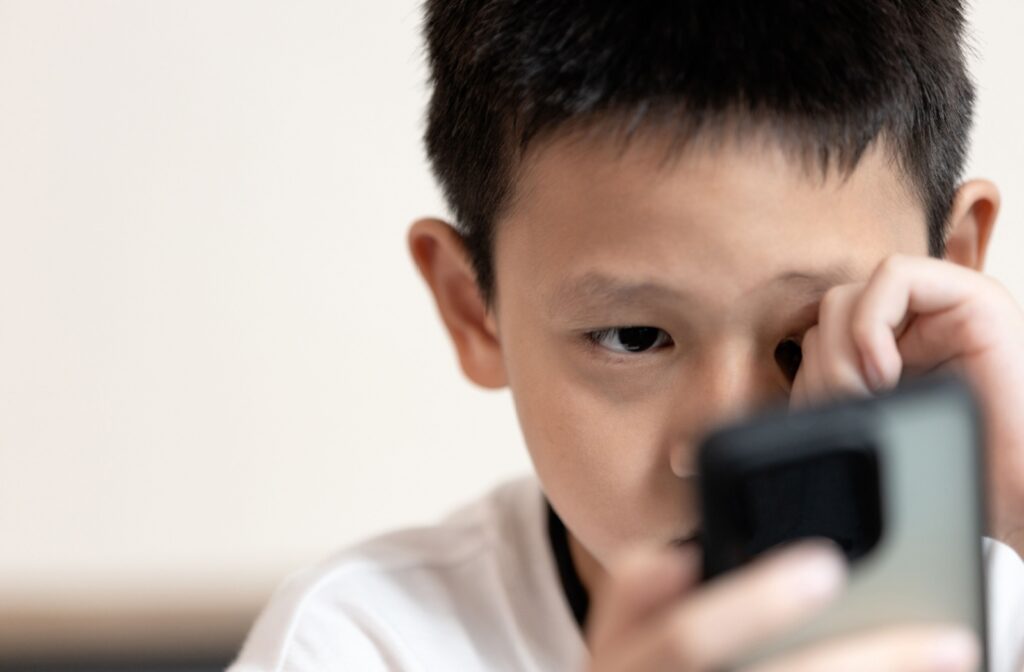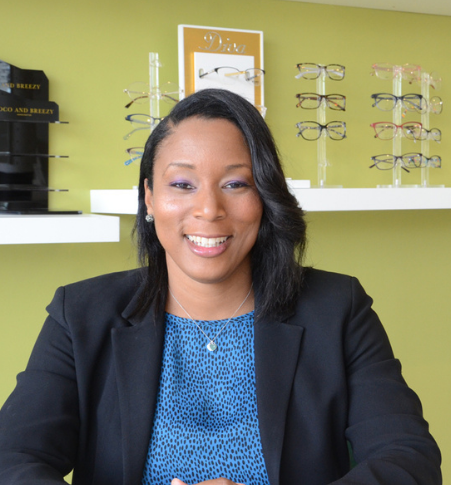Myopia, otherwise known as nearsightedness, is when distant objects appear blurry while nearby objects remain clear. It typically begins in childhood, and if you have a child who’s exhibiting symptoms, you may be wondering if there’s anything you can do to keep it from worsening.
Things that contribute to the development of myopia include not enough time spent outdoors and too much time spent doing near work. But modern optometry also offers treatments that can slow the progression of myopia. Take your child for an eye exam if they’re showing signs of nearsightedness. The earlier myopia is diagnosed, the earlier we can intervene.
Myopia: The Basics
Myopia is when the shape of the eye is abnormal, causing light to focus in front of the retina instead of directly on it. The condition typically begins between ages 6 and 14 and progressively gets worse, stabilizing during a person’s early 20s.
Symptoms of myopia in young people include:
- Expressing that they can’t see something far away, but things up close are clear
- Headaches and eye strain complaints
- Feeling tired when playing sports or other activities that require distance vision
- Challenges with schoolwork, including inattentiveness
- Holding things like books and tablets close to the face
If your child shows these symptoms, take them to an optometrist for a comprehensive eye exam. Many children benefit from a routine eye exam before first grade and every year after, but some children may require more frequent exams.
Discuss your family medical history at your optometry appointment, as genetics play a significant role in myopia development.
What Contributes to Myopia
Myopia gets worse over time. Experts believe key contributors include genetics, insufficient outdoor time, and too much near work.
Growing Up
Children typically experience the fastest myopia progression between the ages of 7 and 10. Myopia is tied to the structure of the eye: when the eye grows too long or the cornea is too curved, it can’t focus light properly. Because children are constantly growing, the eye grows longer as the child grows up.
Not Enough Time Outdoors
Lack of outdoor time is linked to myopia. Research suggests that children who spend at least 13 hours a week outside are less likely to become nearsighted. Research also suggests that outdoor time can help slow myopia’s progression. Scientists believe that outdoor time is beneficial because exposure to high amounts of light outside enables the eye to grow at the right rate.
2 hours of outdoor time a day is an appropriate goal to set. Make sure your kids use sun protection when playing outside. But even if a child stays in the shade with a hat and sunglasses, research suggests that they will still be exposed to more light than if they were indoors.

Near Work & Screen Time
Indoor tasks like screen time and close work are linked to myopia. Research indicates that children under 3 who use screens are more likely to develop myopia by preschool. Research also suggests that there are differences between reading off screens and reading books. People tend to hold screens closer to their faces, which puts more stress on the eyes.
The American Academy of Pediatrics offers guidelines for screen time length according to developmental age. You can also encourage the following healthy habits for children when doing indoor tasks. These habits can help lower a child’s risk of myopia or slow its development:
- The 20-20-20 rule: Every 20 minutes, look at something 20 feet away for 20 seconds.
- The elbow rule: Keep reading materials at least an elbow-to-fist’s length away from your eyes.
- 2 hours max: Limit recreational screen time to 2 hours a day in grade school kids. (This doesn’t include screen time used for schoolwork.)
While outdoor time and screen time are factors you can control, it’s important to remember that myopia isn’t exactly preventable because there’s a genetic component to the condition. That’s why myopia control methods make a difference.
Myopia Control for Young People
Modern optometry offers interventions that can help slow the progression of myopia in children.
For example, atropine eye drops, which are typically used to dilate pupils, can, at low doses, help with myopia control. Typically, these eye drops are instilled once a day at night before bedtime. Children will still need to wear eyeglasses or contact lenses to correct their vision.
MiSight Contact Lenses
At River City Vision Center, we can also prescribe MiSight 1 Day contact lenses. This type of contact lens has been shown to slow myopia by about 50% in children ages 8 to 17. A MiSight contact lens contains multiple zones: 2 correction zones are designed to help nearsighted kids see; meanwhile, 2 periphery defocus zones stimulate the eye to grow more slowly. This happens because the lens adjusts the way light focuses in front of the retina.
Explore Myopia Control Options in Jacksonville or Orange Park
Myopia control is important because high myopia can put a person at higher risk of developing other serious eye conditions, such as retinal detachment and macular degeneration. It’s also important to remember that even laser surgery doesn’t cure myopia; it only reshapes the cornea, but it doesn’t shorten the length of the eye. If your child is showing signs of myopia, the first step is taking them in for an eye exam. We can then confirm a diagnosis and, if necessary, discuss myopia control options. We can also fit your child with contact lenses or eyeglasses to help them see more clearly. To get started, book an appointment in Jacksonville or Orange Park today.





